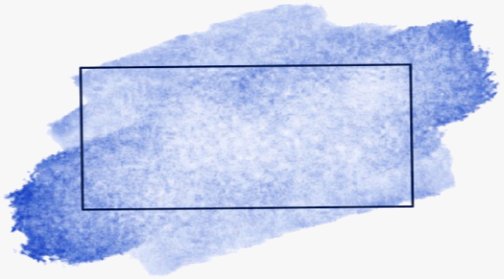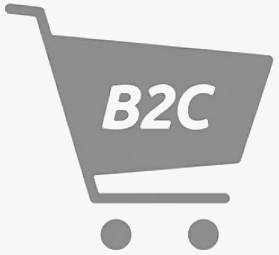Accredited InvestorsAltcoinAnatoli UnitskyAnti-Money Laundering (AML) In CryptoAPIArbitrageArtCoin TokenArticle DirectoryASICAuction Terminology GlossaryBasics of Stock Market InvestingBear MarketBest Crypto Payment Provider In the WorldBitcoinBlockchainBlockchain ConfirmationBlockchain Consensus MechanismBlockchain ForkBlockchain GlossaryBored Ape Yacht ClubBuild a Business That OutperformsBull MarketBuying SkyWay SharesByzantine Fault Tolerance (BFT) ExplainedCasascius CoinCentral Bank Digital Currency (CBDC)Centralized Crypto ExchangeCoinCoinsetCold WalletCollateralCommodity Futures Trading Commission (CFTC)Cross-Chain TechnologyCRUCrypto ExchangeCrypto GlossaryCrypto JokesCrypto Terms to KnowCrypto TickerCryptocurrencyCryptographyCryptojackingCryptounit BlockchainCryptounit GlossaryCryptounit ProgramdApp (Decentralized Application)Dead CoinDecentralized Exchange (DEX)Decentralized Finance (DeFi)Difference Between Bitcoin and EthereumDifferent Ways of Investing MoneyDigital CurrencyDistributed LedgerDo Your Own Research (DYOR)Dollar Cost Averaging (DCA)Dow Jones Industrial Average (DJIA)EncryptionERC-20ERC-721EthereumEvoScentFear Of Missing Out (FOMO)Fear, Uncertainty and Doubt (FUD)Fiat MoneyFNT Fintech CompanyGenesis BlockGlobal Unit PayGlossary of Banking TermsGlossary of Business TermsGlossary of Financial TermsHalvingHODLHot WalletHow Do I Start InvestingHow Rich is Satoshi Nakamoto?How to Create a BlockchainHow to Find Private InvestorsHow to Get Into FintechHow to Program Smart ContractsI Am Thrilled to Be a Part of This Global ProjectInitial Coin Offering (ICO)Initial Public Offering (IPO)Initial Token Offering (ITO)Innovation Basalt TechnologyInnovative Transportation TechnologiesInternational Bank Account Number (IBAN)Investing in Gold Mining StocksInvesting in Gold MiningJagerJoy of Missing Out (JOMO)Know Your Customer (KYC)LedgerLiquidity in CryptocurrencyMaker and Taker Fees in Crypto TradingMarket Capitalization (Market Cap)Meme CoinMetal Credit CardMetaMaskMillenials Now Have Access to Generational WealthMy Best Investment EverNew Digital EvolutionNFT GlossaryOff-Chain TransactionsOn-Chain TransactionsOpen Edition NFTPeer-to-Peer (P2P)Personal Loan GlossaryProbably the Best STO on the MarketProof of Stake (PoS)Real Estate Glossary of TermsReal Estate Investing GlossaryRebase TokenSecurities and Exchange Commission (SEC)Security Token ExchangesSecurity Token Offering (STO)Soulbound Decentralized Identities for Security TokensSoulbound ID Launch by Stobox Proves a SuccessSoulbound TokensStoboxStock Market GlossaryTestimonialsTether Platform and Token (USDT)UnitEx ExchangeUnitsky String TechnologiesUNTBUSDUValidatorWe Started Investing When We Were 25What are Blue Chip NFT?What are Blue Chip Stocks?What are Crypto Assets?What are Crypto Smart Contracts?What are CryptoPunks NFT?What are Digital Assets?What are Digital Collectibles?What are Gas Fees?What are Gas Wars?What are Hashmasks?What are Non Fungible Tokens?What are Non-Sufficient Funds (NSF)?What are Soulbound Tokens (SBT)?What are Stablecoins in Crypto?What are Transactions Per Second (TPS)?What are Utility NFTs?What are Utility Tokens?What Does Burning Crypto Mean?What Does Diamond Hands Mean?What Does Paper Hands Mean?What Does To The Moon Mean?What Does WAGMI Mean?What Happened to Satoshi Nakamoto?What is a 51% Attack?What is a Baby Boomer?What is a Backlink?What is a Banner?What is a Barcode?What is a Bid-Ask Spread in Crypto?What is a Block in Blockchain?What is a Block Reward?What is a Blockchain Address?What is a Blockchain Node?What is a Blockchain Oracle?What is a Blog?What is a Bond?What is a Bot?What is a Broker?What is a Business Accelerator?What is a Cash Cow?What is a Commercial Bank?What is a Commodity?What is a Con?What is a Credit?What is a Credit Limit?What is a Credit Rating?What is a Crypto Airdrop?What is a Crypto Bridge?What is a Crypto Scam?What is a Crypto Token?What is a Crypto Wallet?What is a Crypto Whale?What is a Crypto Winter?What is a Cryptocurrency Public Ledger?What is a Cryptocurrency Roadmap?What is a DAO?What is a Dark Pool?What is a Day Trader?What is a Dead Cat Bounce?What is a Default?What is a Derivative?What is a Digital Credit Card?What is a Fiscal Quarter?What is a Fungible Token?What is a Governance Token?What is a Grace Period?What is a Hard Fork?What is a Hot Wallet?What is a Hybrid Blockchain?What is a Hybrid PoW/PoS?What is a Joint Account?What is a Market Cap?What is a Merkle Tree in Blockchain?What is a Mining Farm?What is a Nonce? What is a PFP NFT?What is a POS System?What is a Prepaid Card?What is a Private Blockchain?What is a Private Key?What is a Public Blockchain?What is a Public Key?What is a Reserve Currency?What is a Ring Signature?What is a Routing Number?What is a Rug Pull in Crypto?What is a Safe Deposit Box?What is a Satoshi?What is a Security Token?What is a Seed Phrase?What is a Shitcoin?What is a Sidechain?What is a Soft Fork?What is a Spot Market?What is a State Bank?What is a SWIFT Code?What is a Tax Identification Number (TIN)?What is a Time Deposit?What is a Transaction Account?What is a Variable Interest Rate?What is a Virtual Assistant (VA)?What is a Virtual Card?What is a Virtual Currency?What is a Visa Card?What is a Whitelist in Crypto?What is a Whitepaper?What is Accounts Payable (AP)?What is AMA in Crypto?What is Amortization?What is an Accrual?What is an ACH Transfer?What is an Actuary?What is an Addendum?What is an Algorithm?What is an Angel Investor?What is an Annuity?What is an Asset?What is an ATM?What is an Atomic Swap?What is an Audit?What is an Avatar?What is an EIN?What is an Embargo?What is an Entrepreneur?What is an IDO (Initial Dex Offering)?What is an Interest Rate?What is an Internet cookie?What is an Investment Bank?What is an NFT Drop?What is an NFT Floor Price?What is an Ommer Block?What is an Orphan Block?What is an Outstanding Check?What is an Overdraft?What is Artificial Intelligence (AI)?What is B2B (Business-to-Business)?What is B2G (Business-to-Government)?What is Bartering?What is Bitcoin Dominance?What is Bitcoin Pizza Day?What is Blockchain Immutability?What is Blockchain Used For?What is BRICS?What is Business-to-Consumer (B2C)?What is C2C (Customer to Customer)?What is Capitalism?What is Catfishing?What is CFD Trading?What is Check Kiting?What is Cloud Mining?What is Communism?What is Content Marketing?What is Decentralization in Blockchain?What is DeFi in Crypto?What is Delisting?What is Depreciation?What is Digital Marketing?What is Diversification?What is Double Spending?What is Dumb Money?What is Dumping?What is Earnings Per Share (EPS)?What is Economics?What is Email Marketing?What is Equity?What is Etherscan?What is Fintech?What is Foreign currency?What is Forex?What is Fundamental Analysis (FA)?What is GameFi?What is Generative Art NFT?What is Gwei?What is Hard Currency?What is Hash Rate?What is Hashing in Blockchain?What is Inflation?What is Initial Game Offering (IGO)?What is Interest?What is Interest Income?What is Mainnet?What is Mastercard?What is Metaverse in Crypto?What is Mining in Cryptocurrency?What is Minting NFT?What is Mobile Banking?What is Money Laundering?What is NFT Alpha?What is NFT Metadata?What is NFT Rarity?What is NGMI Meaning?What is Nominal Interest Rate?What is Online Banking?What is Open-End Credit?What is OpenSea NFT Marketplace?What is Personal Identification Number (PIN)?What is Play-to-Earn?What is Polygon?What is Proof of Authority (PoA)?What is Proof of Work (PoW)?What is Public Key Cryptography?What is Pump and Dump?What is Quantum Computing?What is Refinancing?What is Retail Banking?What is Ripple?What is Sharding?What is Slippage in Crypto?What is Smart Money?What is Solvency?What is Soulbound ID?What is SSL?What is Staking in Cryptocurrency?What is Technical Analysis (TA)?What is Testnet?What is the Ask Price?What is the Better Business Bureau (BBB)?What is the Bid Price?What is the Dark Web?What is the InterPlanetary File System (IPFS)?What is the Gold Standard?What is the Lightning Network?What is the Prime Rate?What is the Sandbox?What is the Secondary Market?What is the World Bank?What is Tier 1 Capital?What is Tokenomics?What is TRC-20?What is Universal Banking?What is Unspent Transaction Output (UTXO)?What is Usury?What is Volatility in Crypto?What is Wash Trading?What is Web3?What is Whisper?What is XRP?What is Zero-Knowledge Proof (ZKP)?Who is Beeple?Who is Satoshi Nakamoto?Who is Vitalik Buterin?Why Tokenization is a Safe HavenWhy You Should Try Your Hand at Trading
What is a Banner?
- Home
- Glossary of Business Terms
- What is a Banner?
In the world of internet advertising, banners are a common and effective marketing tool.

But what exactly is a banner, and how can it be used to promote a business or product online?
What is a Banner?
A banner is the most widely-used advertising format on the internet, which involves incorporating a graphic advertisement within a webpage. They are designed to grab attention, and as such, may not always match the website's visual style. The primary objectives of banners are to generate advertising impressions and to drive traffic to the advertiser's website through clicks.
Banners are typically included on websites through agreements between webmasters, which may involve banner exchanges or financial arrangements. Alternatively, they can be incorporated using platforms such as Google Adsense, which enable monetization.
History of Banner Advertising
Banner advertising first emerged in the early days of the internet, when websites began to offer space for advertising alongside their content. The first banner ad, created by AT&T in 1994, featured a simple message ("Have you ever clicked your mouse right here?") and a clickable image that led to a website promoting AT&T's internet services.
Since then, banner advertising has become a staple of internet marketing, with businesses using banners to promote products, services, events, and more. Today, banner ads can be found on virtually every type of website, from news sites to social media platforms.
Types of Banners
There are many different types of banners that can be used for internet advertising. Some of the most common include:
- Static banners: These banners feature a single image or graphic, along with text and/or a call to action. They can be either horizontal or vertical, and are often used for display ads on websites or social media platforms.
- Animated banners: Animated banners are similar to static banners, but include motion or animation. This can help to capture the viewer's attention and make the ad more engaging.
- Rich media banners: Rich media banners are more interactive and engaging than static or animated banners. They may include video or audio, interactive elements, or other advanced features.
- Pop-up banners: Pop-up banners are displayed in a separate window or tab, rather than on the main page of a website. They are often used for advertising purposes, but can be seen as intrusive or annoying by some users.
Best Practices for Banner Advertising
When creating a banner ad for internet advertising, it's important to keep some best practices in mind. Here are a few tips to help ensure that your banner ad is effective:
- Keep it simple: A banner ad should be clear and easy to understand. Avoid cluttering the ad with too much information, and focus on a single message or call to action.
- Use eye-catching visuals: A banner ad should be visually appealing and attention-grabbing. Use high-quality images or graphics, and consider adding animation or motion to make the ad more engaging.
- Be clear and concise: The message of your banner ad should be clear and easy to understand. Use simple language, and avoid using jargon or technical terms that may be confusing to viewers.
- Target your audience: Consider who your target audience is, and tailor your banner ad to their interests and needs. This can help to ensure that your ad is more effective at reaching and engaging your desired audience.
- Optimize for mobile: With more and more users accessing the internet on mobile devices, it's important to ensure that your banner ad is optimized for mobile viewing. Use a responsive design that adapts to different screen sizes, and keep the file size of the ad small to minimize loading times.
Banner Formats
Various banner formats are utilized in display advertising campaigns, including:
- Rectangular banners: These are typically placed at the top or bottom of a page, with dimensions of 468x90 or 728x90 pixels.
- Skyscraper banners: These are usually located in a left or right column, with dimensions of 120x600 or 160x600 pixels.
- Page stealer banners: These are integrated into articles and typically have a width of 300 pixels.
- Expandable banners: With the rise of responsive design, expandable banners are becoming increasingly common. They adjust in size to fit the device type and screen resolution.
- Interstitial banners: These open prior to a page loading and are often viewed as intrusive. However, they are effective in capturing the user's attention.
- Layer banners: These are also viewed as intrusive and place a layer on the final page that must be explicitly closed or waited out for the scheduled exposure time.
The Bottom Line
Banners are a common and effective tool for internet advertising. By using eye-catching visuals, clear messaging, and targeted content, businesses can create banner ads that engage and inform their desired audience. Whether you're using a static banner, animated banner, or rich media banner, keeping best practices in mind can help to ensure that your ad is effective and successful.
Related Articles

Solo Build It
Big companies like Wix spend tons on advertising to make you believe that there's something special about their templates, or...

uGain
It also helps entrepreneurs digitize their customer base, get to know their customers and give them what they are looking for, thus reducing advertising costs and...

What is Business-to-Consumer (B2C)?
These businesses can utilize a variety of profit models, such as marketing, advertising, and fee-based approaches.
- Home
- Glossary of Business Terms
- What is a Banner?